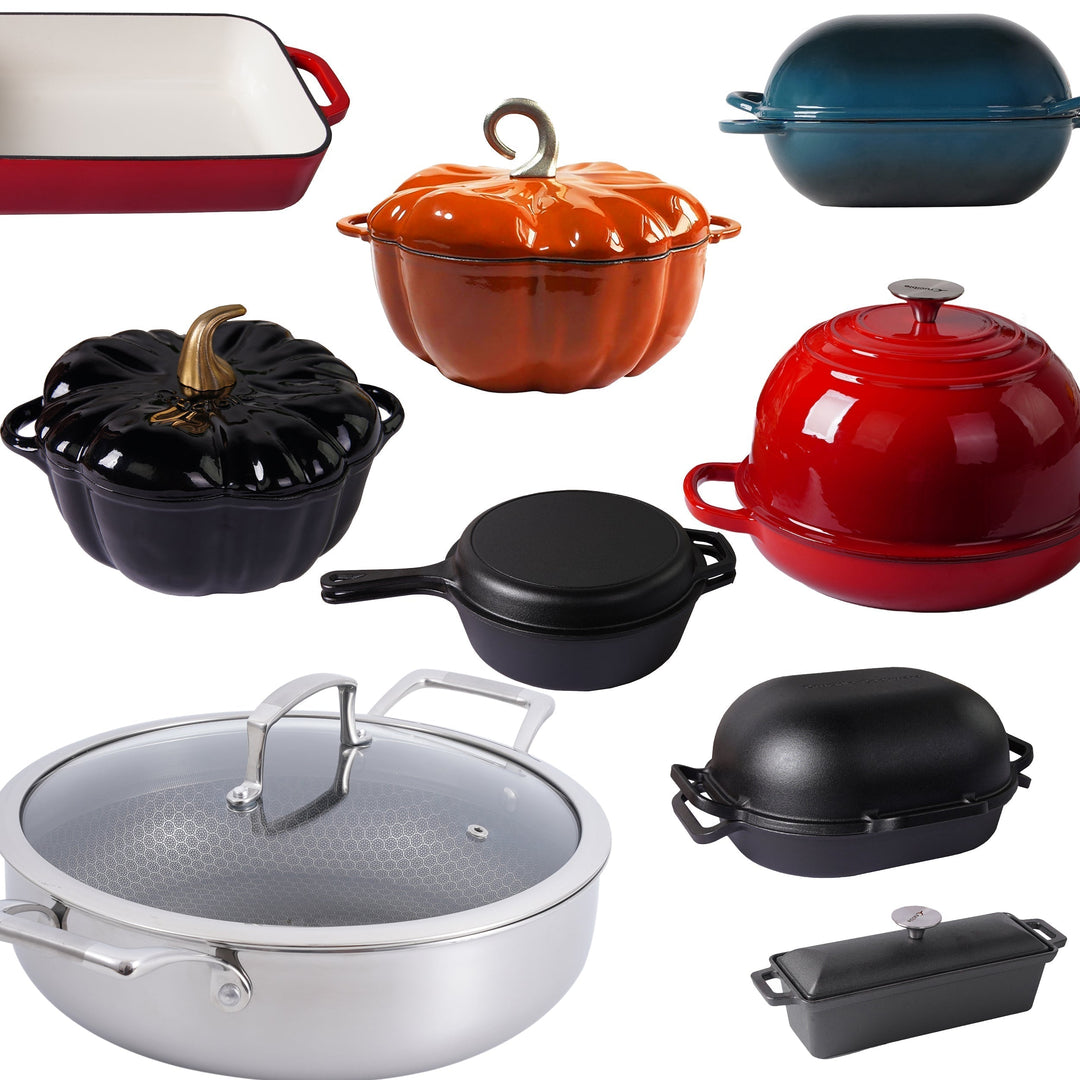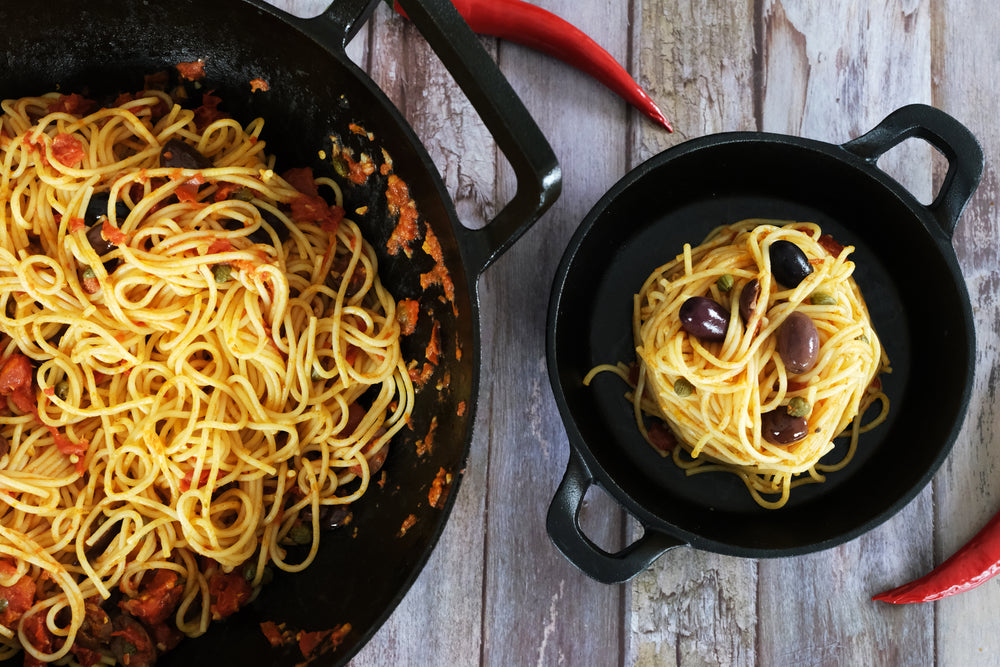Utforske globale smaker: Essensielle krydder for kjøkkenet ditt

Krydder har den magiske evnen til å forvandle vanlige retter til ekstraordinære kulinariske opplevelser. Hver kultur har et unikt utvalg av krydder som definerer dens matlaging og gir dybde til smakene. I dette innlegget tar vi deg med på en reise rundt i verden, og utforsker essensielle krydder som enhver hjemmekokk bør ha på kjøkkenet sitt. Enten du er en erfaren kokk eller en nysgjerrig nybegynner, vil disse krydderne inspirere deg til å eksperimentere og bringe globale smaker til bordet ditt.
India: Gurkemeie
Hvorfor du trenger det: Gurkemeie, kjent for sin livlige gule farge og jordaktige, lett bitre smak, er en hjørnestein i indisk matlaging. Den brukes i curry, risretter og til og med drikker som golden milk.
Hvordan bruke det:
- Oppskrifter: Tilsett gurkemeie i din neste curry eller dryss det i supper for ekstra varme og farge.
- Tips: Kombiner det med svart pepper for å forbedre opptaket og helsefordelene.
Helsefordeler:
- Betennelsesdempende egenskaper
- Rik på antioksidanter
- Støtter fordøyelseshelsen

Mexico: Spisskummen
Hvorfor du trenger det: Spisskummen gir en varm, nøtteaktig smak til retter og er en basis i meksikansk, mellomøstlig og indisk matlaging. Den finnes både som hele frø og malt.
Hvordan bruke det:
- Oppskrifter: Bruk malt spisskummen i chili, taco og enchiladas, eller rist hele frø og tilsett dem i risretter.
- Tips: Rist spisskummenfrø i en tørr panne for å frigjøre den fulle smaken før du maler eller bruker hele.
Helsefordeler:
- Hjelper fordøyelsen
- Rik på jern
- Kan bidra til å kontrollere blodsukkernivået

Spania: Røkt paprika
Hvorfor du trenger det: Røkt paprika, eller pimentón, tilfører en søt, røkt dybde til spanske retter. Den lages av røkte røde paprika og finnes i søte, bittersøte og sterke varianter.
Hvordan bruke det:
- Oppskrifter: Dryss røkt paprika på ovnsstekte grønnsaker, bruk det i paella, eller tilsett det i gryteretter for en røkt smak.
- Tips: Kombiner det med hvitløk og olivenolje for en rask og smakfull marinade.
Helsefordeler:
- Rik på antioksidanter
- Inneholder vitamin A og E
- Støtter sunn syn

Marokko: Kanel
Hvorfor du trenger det: Kanel er mer enn bare et søtt krydder. I marokkansk matlaging brukes det i salte retter som taginer og couscous, og gir en varm og aromatisk smak.
Hvordan bruke det:
- Oppskrifter: Tilsett kanel i kjøttgryter, bruk det i krydderblandinger til lam, eller bland det i risretter.
- Tips: Bruk hele kanelstenger for en mildere smak eller malt kanel for mer intensitet.
Helsefordeler:
- Betennelsesdempende egenskaper
- Hjelper med å regulere blodsukkeret
- Forbedrer hjernefunksjonen

Thailand: Sitrongress
Hvorfor du trenger det: Sitrongress gir en unik sitrussmak som er essensiell i thailandsk matlaging, spesielt i supper, karri og te.
Hvordan bruke det:
- Oppskrifter: Knus stilkene og tilsett dem i supper som Tom Yum, bruk dem i marinader, eller lag sitrongress-te.
- Tips: Fjern de harde ytterlagene og bruk bare den møre indre stilken til matlaging.
Helsefordeler:
- Antimikrobielle egenskaper
- Støtter fordøyelseshelsen
- Kan bidra til å redusere angst

Etiopia: Berbere
Why You Need It: Berbere is a spicy, flavorful blend of spices used in Ethiopian cuisine, featuring chili peppers, garlic, ginger, basil, korarima, rue, ajwain, nigella, and fenugreek.
Hvordan bruke det:
- Recipes: Use berbere as a rub for meats, in stews like Doro Wat, or sprinkle it on roasted vegetables.
- Tip: Start with small amounts if you're new to this spice blend, as it can be quite potent.
Helsefordeler:
- Rik på antioksidanter
- Betennelsesdempende egenskaper
- Støtter hjertehelsen
Midtøsten: Sumac
Why You Need It: Sumac adds a tangy, lemony flavor to Middle Eastern dishes. It's often used as a garnish or mixed with other spices.

Hvordan bruke det:
- Recipes: Sprinkle sumac on salads, use it to season grilled meats, or mix it into dips like hummus.
- Tip: Combine sumac with thyme, sesame seeds, and salt to make za’atar, a versatile spice blend.
Helsefordeler:
- Høyt innhold av antioksidanter
- Betennelsesdempende egenskaper
- Kan bidra til å senke blodsukkeret
Tips for Sourcing and Storing Spices
- Buy Whole Spices: Whole spices retain their flavor longer than ground ones. Grind them as needed to ensure maximum freshness.
- Store Properly: Keep spices in airtight containers, away from light, heat, and moisture. A cool, dark pantry is ideal.
- Check Freshness: Spices don’t spoil but they do lose potency over time. Whole spices last about 4 years, ground spices about 2 to 3 years, and dried herbs about 1 to 3 years.

Å samle alt sammen
Å inkludere disse globale krydderne i kjøkkenet ditt ikke bare diversifiserer matlagingen din, men introduserer også en rekke helsefordeler. Eksperimenter med nye oppskrifter, bland krydder for å skape dine egne signatursmaker, og nyt den kulinariske reisen som strekker seg over kontinenter—alt fra komforten av ditt hjem.
















Legg igjen en kommentar